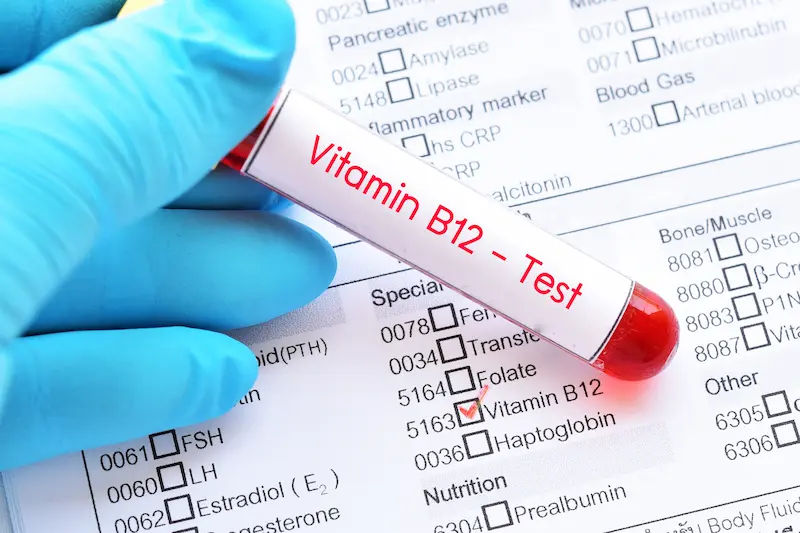Signs Of Vitamin A Deficiency
Discover the common signs of vitamin A deficiency, including vision problems, dry skin, and weakened immunity. Learn how to prevent and manage low vitamin A levels through diet and supplements.

Written by Dr. J T Hema Pratima
Reviewed by Dr. Dhankecha Mayank Dineshbhai MBBS
Last updated on 24th Oct, 2025

Introduction
If you’ve been struggling with poor night vision, frequent infections, or dry, rough skin, your body might be signalling a vitamin deficiency—specifically vitamin A deficiency. Vitamin A is essential for eye health, immune function, skin integrity, and growth. When levels fall too low, the earliest signs often show up in the eyes and on the skin, and more serious complications can follow if the deficiency isn’t addressed.
In this guide, you’ll learn the early and advanced signs of vitamin A deficiency, who is most at risk, how doctors diagnose it, and the safest ways to restore healthy levels through diet and supplements. We’ll also explain how vitamin A works in your body, which foods are rich in it, and what to do if you suspect a deficiency. Along the way, you’ll find evidence-based tips, practical examples, and visual concepts that make the topic easy to understand. If symptoms persist beyond two weeks, consult a doctor online with Apollo24|7 for further evaluation. For relevant lab tests, Apollo 24|7 also offers convenient home collection. Let’s get started.
What is Vitamin A and How Your Body Uses It
Vitamin A is a fat-soluble vitamin essential for vision, immune defence, skin and mucous membrane integrity, reproduction, and growth. Your body uses vitamin A in two main forms:
• Preformed vitamin A (retinol, retinal, retinyl esters): Found in animal foods like liver, dairy, and eggs. This form is readily active in the body.
• Provitamin A carotenoids (e.g., beta-carotene): Found in plants such as carrots, sweet potatoes, and spinach. Your body converts these into retinol as needed.
In the eye, the retina uses vitamin A (as retinal) to form rhodopsin, a pigment needed for vision in low light. That’s why night blindness is often the earliest sign of a deficiency. In the immune system, vitamin A supports the health of mucosal barriers (like the lining of your respiratory tract) and modulates immune cells. Low levels impair your ability to fight infections and heal.
Because vitamin A is fat-soluble, your body stores it—mainly in the liver. This is a double-edged sword: it helps you maintain levels between meals, but extremely high supplemental intake can accumulate and become toxic. Most people can meet needs from a balanced diet, but certain groups—like young children in low-resource settings, people with fat malabsorption, and those with liver disease—face a higher risk of a vitamin deficiency, especially vitamin A deficiency.
Unique insight: Not everyone converts plant carotenoids into active vitamin A equally. Genetics, gut health, and overall diet (including fat and zinc intake) influence how much beta-carotene becomes retinol, which can be a hidden reason for persistent deficiency in some people relying mainly on plant sources.
Consult Top Specialists
Early Signs: The Eye Symptoms You Shouldn’t Ignore
One of the hallmark early signs of vitamin A deficiency is night blindness—difficulty seeing in dim light or adjusting from bright to dark environments. People often notice they can’t drive comfortably at dusk, struggle in movie theaters, or feel unsure walking in poorly lit rooms. Night blindness may be subtle at first, so it’s often missed until it interferes with daily life.
As deficiency progresses, the surface of the eye starts to dry (xerosis). You might feel grittiness, burning, or persistent dryness despite using lubricating eye drops. A classic clinical clue is Bitot’s spots—foamy, whitish patches on the conjunctiva (the white of the eye). These are considered an unmistakable sign of vitamin A deficiency (part of the xerophthalmia spectrum)
Clinicians describe eye changes in stages:
• Night blindness (XN): Early deficiency sign.
• Conjunctival xerosis (X1A): Dryness of the eye’s surface.
Bitot’s spots (X1B): Foamy patches due to keratin buildup.
Corneal xerosis (X2) and ulceration/keratomalacia (X3A/X3B): Serious damage that can lead to scarring and blindness.
• Corneal scarring (XS) and retinal changes (XF): Often permanent.
Left untreated, advanced eye involvement can cause irreversible vision loss. Globally, vitamin A deficiency is a leading cause of preventable childhood blindness. In high-risk regions, public health programs aim to prevent this outcome through supplementation and food fortification.
If you recognise night blindness symptoms or notice dry eyes with foamy patches, seek prompt care. An eye exam can detect xerophthalmia, and early treatment can restore eye surface health and protect your vision. If symptoms persist beyond two weeks, consult a doctor online with Apollo 24|7 for further evaluation.
Skin, Hair, and Dental Changes with Deficiency
Beyond the eyes, vitamin A deficiency shows up on the skin and hair. Classic signs include:
• Dry, rough, or scaly skin, especially on the arms and thighs
• Follicular hyperkeratosis: tiny, rough bumps around hair follicles (often mistaken for “chicken skin”)
• Cracked lips and dry mouth
• Brittle or thinning hair, and sometimes hair loss
• Increased dental enamel defects and a tendency toward gum problems due to compromised mucosal health
Why this happens: Vitamin A helps skin cells mature properly and maintains the integrity of mucous membranes. Without enough of it, cells become dry and keratinised (hardened). This same process can affect the linings of the lungs and gut, making infections more likely and healing slower.
Infections and Immunity: Why You Get Sick More Often
Vitamin A is critical for the immune system. It supports the integrity of mucosal barriers (nose, lungs, gut), which are your first line of defence, and it guides the development and function of immune cells. When vitamin A is low, these barriers weaken, allowing pathogens to invade more easily, and immune responses can be less efficient.
Real-world impact:
• In children, deficiency increases the risk and severity of respiratory and gastrointestinal infections. Vitamin A supplementation in high-risk settings has been shown to reduce all-cause mortality in children aged 6–59 months by roughly 12% on average in large analyses, with notable benefits for measles and diarrhoea outcomes.
• Measles is particularly severe in vitamin A–deficient children. WHO recommends vitamin A for children with measles to reduce complications and mortality. This highlights how intertwined infection and nutrition are—illness both worsens and results from deficiency.
Adults may notice they “catch every bug,” experience prolonged colds, or have repeated episodes of bronchitis. Gut infections can also linger due to a compromised intestinal lining.
Growth, Fertility, and Pregnancy Impacts
In growing children, vitamin A supports normal skeletal growth and tissue development. Deficiency can contribute to stunting and delayed growth, especially when combined with other nutrient gaps and recurrent infections.
During pregnancy, vitamin A needs increase. Mild deficiency may cause maternal night blindness—difficulty seeing in low light during pregnancy—which is a red flag for broader nutritional stress. Severe deficiency increases risks for both mother and baby, including infections and poor outcomes. However, too much preformed vitamin A (retinol) during pregnancy can be harmful and is linked to birth defects. That’s why prenatal supplements use carefully balanced amounts and often rely more on beta-carotene, which the body converts as needed.
Fertility can also be affected: Vitamin A is involved in reproductive tissue health in both males and females. Low levels may contribute to subfertility, though causes are typically multifactorial.
If you’re pregnant or planning to conceive and have symptoms like night blindness, consult your obstetrician promptly. If your condition does not improve after trying diet strategies, book a physical visit to a doctor with Apollo 24|7.
Consult Top Specialists
Who Is at Highest Risk for Vitamin A Deficiency
While anyone can develop a vitamin deficiency, certain groups are at higher risk for vitamin A deficiency:
• Infants and young children in low-resource settings: Rapid growth, frequent infections, and limited dietary variety increase risk. This is where public health supplementation and food fortification are most impactful.
• Pregnant and lactating people: Increased needs plus limited intake can lead to deficiency; careful medical guidance is essential.
• People with fat malabsorption: Conditions like celiac disease, Crohn’s disease, cystic fibrosis, chronic pancreatitis, cholestatic liver disease, and those who’ve had bariatric surgery reduce absorption of fat-soluble vitamins.
• Highly restrictive or very low-fat diets: Fat is needed for carotenoid absorption; lack of dietary diversity can contribute to deficiency.
• Chronic liver disease or alcohol dependence: Impairs storage and metabolism of vitamin A.
• Measles or frequent infections: Illness can deplete stores and increase needs.
• Limited access to animal-source foods and low intake of carotenoid-rich produce.
How Doctors Diagnose Vitamin A Deficiency?
Diagnosis involves combining your history, symptoms, diet review, exam findings, and sometimes lab tests:
• Clinical eye exam: Detects signs of xerophthalmia (e.g., Bitot’s spots, corneal dryness/ulcers). These findings can be diagnostic in the right context.
• Blood tests:
- Serum retinol: Levels below about 0.70 µmol/L (20 µg/dL) often indicate deficiency, although levels can drop during infections and inflammation.
- Retinol-binding protein (RBP): Sometimes used as a proxy when retinol testing isn’t available.
- Relative dose-response (RDR) tests: Specialised tests to assess liver stores in research or select clinics.
- Related labs: Zinc, liver function tests, and markers of inflammation can provide context because they affect vitamin A transport and interpretation of results.
• Nutrition assessment: A diet history often reveals low intake of animal sources, few colourful fruits/vegetables, or very low fat intake.
If you have warning signs (night blindness, Bitot’s spots, frequent infections, rough bumpy skin) or belong to a high-risk group, seek medical advice. Apollo24|7 offers convenient home collection for tests like serum vitamin A (retinol), zinc, and liver function, which can support diagnosis. If symptoms persist beyond two weeks, consult a doctor online with Apollo24|7 for further evaluation.
Treatment and Prevention: Diet, Supplements, and Fortification
• Diet-first strategy: Aim to combine preformed vitamin A and provitamin A carotenoids with healthy fats to maximise absorption.
• Animal sources (preformed vitamin A): Liver (very high—consume sparingly), fish liver oils, whole milk/dairy, eggs.
• Plant sources (provitamin A): Sweet potatoes, carrots, pumpkins, mangoes, papaya, dark leafy greens (spinach, amaranth, kale). Add a drizzle of oil or include nuts/seeds to aid absorption.
• Supplements: For clinically confirmed deficiency—or in high-risk settings—supplements may be prescribed. Dosage varies by age, clinical scenario, and region.
• Children in high-prevalence regions: Periodic high-dose supplementation programs can reduce mortality and prevent blindness; this is a public health measure guided by WHO/UNICEF.
• Adults and pregnancy: Supplementation is individualised. In pregnancy, avoid high-dose preformed vitamin A due to teratogenic risk; beta-carotene sources are generally safer. Always consult your clinician.
• Fortification: Many countries fortify staple foods (oils, flour, dairy) with vitamin A to reduce population-level deficiency.
• Address underlying issues: Treat malabsorption, optimise zinc status, and manage infections (e.g., measles) to restore balance.
Safety note: More is not better. Chronically exceeding the upper intake level (UL) for preformed vitamin A (3,000 mcg RAE/day for adults) can lead to toxicity—headache, liver abnormalities, bone pain, and teratogenic effects in pregnancy. Beta-carotene from foods does not cause vitamin A toxicity, but high-dose beta-carotene supplements have been linked to increased lung cancer risk in smokers; avoid them if you smoke.
How Much Vitamin A Do You Need?
Recommended Dietary Allowances (RAEs per day) for vitamin A:
• Adults: Men 900 mcg RAE; Women 700 mcg RAE
• Pregnancy: 770 mcg RAE
• Lactation: 1,200–1,300 mcg RAE
• Children: Age-specific needs; consult pediatric guidance.
Upper Intake Level (UL) for preformed vitamin A in adults: 3,000 mcg RAE/day. This UL does not apply to carotenoids from foods.
What counts as 1 RAE? It’s a way to standardise different sources:
• 1 mcg retinol = 1 mcg RAE
• 12 mcg beta-carotene (from food) ≈ 1 mcg RAE (conversion varies)
• 24 mcg other provitamin A carotenoids ≈ 1 mcg RAE
Special considerations:
• Malabsorption may require medical dosing and fat-soluble vitamin formulations.
• Liver disease and alcohol use warrant careful monitoring.
• Pregnancy requires caution with preformed vitamin A; emphasise food sources and beta-carotene unless advised otherwise by your doctor.Check Your Vitamin A Level Here
Vitamin A Foods: Simple, Practical Meal Ideas
Building a varied plate helps prevent deficiency:
• Breakfast: Spinach and tomato omelette (retinol from eggs, carotenoids from spinach), whole-grain toast, fruit like papaya or mango.
• Lunch: Lentil and carrot soup with a drizzle of olive oil; side of salad with dark greens; yoghurt for extra retinol if using whole milk.
• Snack: Carrot sticks with hummus or roasted pumpkin seeds.
• Dinner: Grilled fish or paneer with sautéed kale; sweet potato mash with a bit of ghee or olive oil.
Animal sources (preformed vitamin A):
• Liver (occasional, small portions), eggs, whole milk yoghurt, cheese, butter, cod liver oil.
Plant sources (provitamin A):
• Sweet potatoes, carrots, pumpkin, butternut squash, mangoes, cantaloupe, papaya, spinach, kale, amaranth leaves.
Cooking tips:
• Steam or sauté greens with a little oil to improve carotenoid absorption.
• Pair carotenoid-rich veggies with sources of fat (nuts, seeds, oil, eggs).
• Don’t rely solely on juice; whole vegetables and fruits provide fibre and synergistic nutrients.
When to Seek Medical Help?
Seek care promptly if you experience:
• Night blindness lasting more than a week or worsening in low light
• Eye surface changes: dryness, grittiness, foamy white patches (Bitot’s spots)
• Rapidly progressing eye discomfort, pain, or vision changes
• Recurrent respiratory or gut infections without a clear cause
• Rough, bumpy skin plus other deficiency symptoms
• If you’re pregnant and suspect a deficiency (especially night blindness)
If symptoms persist beyond two weeks, consult a doctor online with Apollo 24|7 for further evaluation. If indicated, Apollo 24|7 offers home collection for vitamin A (serum retinol), zinc, and liver function tests. Early diagnosis and treatment can prevent permanent eye damage.
Consult Top Specialists
Conclusion
Vitamin A is a small nutrient with a big job: protecting your vision, skin, and immune system. When a vitamin deficiency involves vitamin A, your body sends signals—trouble seeing at dusk, dry or foamy patches on the eye, rough skin, and frequent infections. Recognising these signs early can prevent more serious problems, including permanent vision loss.
The good news: For most people, correcting vitamin A deficiency starts with the plate. Combining animal sources (like eggs and dairy) with vibrant plant foods (carrots, sweet potatoes, leafy greens) and a bit of healthy fat provides a steady stream of vitamin A and its precursors. In higher-risk situations—young children in low-resource settings, pregnancy, or malabsorption—supplements and fortified foods play a critical role, guided by medical advice and public health recommendations.
If you suspect a deficiency, don’t wait. A quick conversation with a clinician and, if needed, simple tests can clarify what’s going on and how to fix it. If your condition does not improve after trying these methods, book a physical visit to a doctor with Apollo24|7. For labs, Apollo24|7’s home collection services make testing convenient. Taking action now protects not just your sight, but your overall health—today and for the long term.
Consult Top Specialists

Dr Syed Mateen Pasha
General Physician
2 Years • MBBS
Bengaluru
PRESTIGE SHANTHINIKETAN - SOCIETY CLINIC, Bengaluru

Dr. Syed Ismail Ali
General Practitioner
7 Years • MBBS
Hyderabad
Apollo 24|7 Clinic, Hyderabad

Dr. Harshendra Jaiswal
General Physician/ Internal Medicine Specialist
12 Years • MBBS , MD (General medicine)
Kolkata
108 DHANA DHANVANTARI Clinic, Kolkata
(25+ Patients)

Dr. Anand Ravi
General Physician
2 Years • MBBS
Bengaluru
PRESTIGE SHANTHINIKETAN - SOCIETY CLINIC, Bengaluru
Dr. Thandra Ramoji Babu
General Physician/ Internal Medicine Specialist
5 Years • MBBS, DNB(General Medicine)
Warangal
Sai Ram multi-specialty hospital, Warangal
Consult Top Specialists

Dr Syed Mateen Pasha
General Physician
2 Years • MBBS
Bengaluru
PRESTIGE SHANTHINIKETAN - SOCIETY CLINIC, Bengaluru

Dr. Syed Ismail Ali
General Practitioner
7 Years • MBBS
Hyderabad
Apollo 24|7 Clinic, Hyderabad

Dr. Harshendra Jaiswal
General Physician/ Internal Medicine Specialist
12 Years • MBBS , MD (General medicine)
Kolkata
108 DHANA DHANVANTARI Clinic, Kolkata
(25+ Patients)

Dr. Anand Ravi
General Physician
2 Years • MBBS
Bengaluru
PRESTIGE SHANTHINIKETAN - SOCIETY CLINIC, Bengaluru
Dr. Thandra Ramoji Babu
General Physician/ Internal Medicine Specialist
5 Years • MBBS, DNB(General Medicine)
Warangal
Sai Ram multi-specialty hospital, Warangal
Consult Top Specialists

Dr Syed Mateen Pasha
General Physician
2 Years • MBBS
Bengaluru
PRESTIGE SHANTHINIKETAN - SOCIETY CLINIC, Bengaluru

Dr. Syed Ismail Ali
General Practitioner
7 Years • MBBS
Hyderabad
Apollo 24|7 Clinic, Hyderabad

Dr. Harshendra Jaiswal
General Physician/ Internal Medicine Specialist
12 Years • MBBS , MD (General medicine)
Kolkata
108 DHANA DHANVANTARI Clinic, Kolkata
(25+ Patients)

Dr. Anand Ravi
General Physician
2 Years • MBBS
Bengaluru
PRESTIGE SHANTHINIKETAN - SOCIETY CLINIC, Bengaluru
Dr. Thandra Ramoji Babu
General Physician/ Internal Medicine Specialist
5 Years • MBBS, DNB(General Medicine)
Warangal
Sai Ram multi-specialty hospital, Warangal
More articles from Vitamin Deficiency
Frequently Asked Questions
Q1: What is the earliest sign of vitamin A deficiency?
Night blindness is often the earliest sign, making it hard to see in low light. If you notice this, ask about a serum retinol test for vitamin A and a diet review.
Q2: Can I get enough vitamin A from plants alone?
Yes, many people do—if they eat plenty of carotenoid-rich foods (carrots, sweet potatoes, leafy greens) with some dietary fat. However, conversion varies by person; some may need more or include animal sources.
Q3: How long does it take to correct vitamin A deficiency?
Mild deficiency may improve within weeks of diet changes or supplements; eye surface changes can take longer. If symptoms persist beyond two weeks, consult a doctor online with Apollo 24|7.
Q4: Is vitamin A toxicity a concern?
It can be if you overuse preformed vitamin A supplements. Stay below the adult UL of 3,000 mcg RAE/day unless medically supervised. Beta-carotene from foods is safer but avoid high-dose beta-carotene supplements if you smoke.
Q5: Who should consider testing for vitamin A?
People with night blindness, Bitot’s spots, frequent infections, rough bumpy skin, malabsorption issues, or pregnant individuals with visual changes. Apollo 24|7 offers home collection for vitamin A (serum retinol) and related tests.
.png) Buy 2, Get EXTRA OFF!
Buy 2, Get EXTRA OFF!



